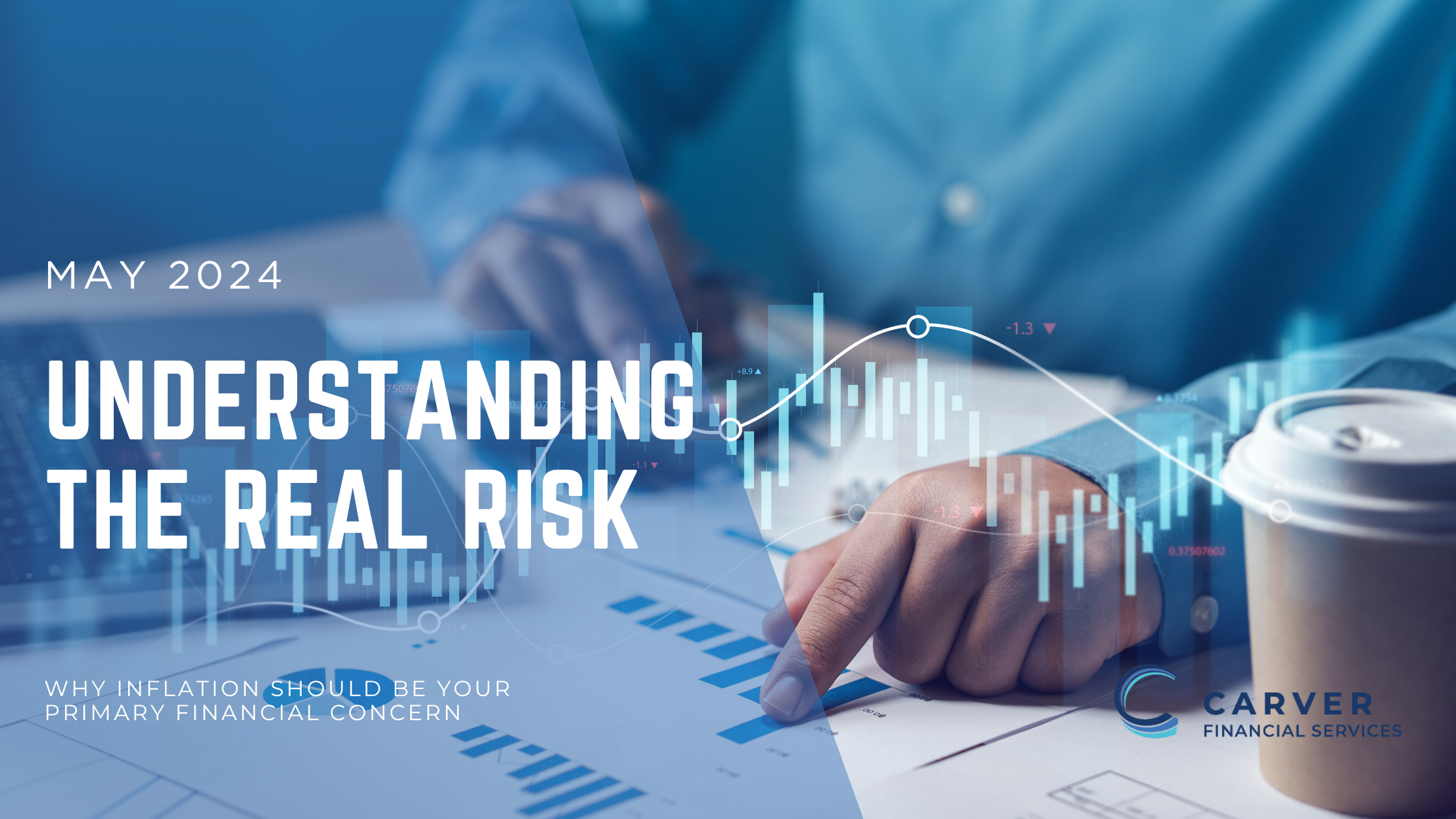The Silent Threat Most Investors Overlook
When it comes to financial planning, conversations often center around market volatility, diversification, or asset allocation.
But there’s another, quieter risk that can do far more long-term damage to your wealth: inflation.
Inflation is the gradual increase in prices for goods and services — the silent erosion of your purchasing power. Over time, it makes every dollar you’ve saved worth less.
You may not feel it day-to-day, but it compounds quietly in the background, often posing a greater risk to your financial future than the stock market ever could.
At Carver Financial Services, we believe inflation is the single biggest risk facing most Americans — and that addressing it should be central to every long-term financial plan.
Inflation: A Bigger Threat Than Market Volatility
Many investors fixate on market risk — the fear that their portfolios will decline during downturns.
Yet history shows that inflation can have a more profound and lasting effect on wealth.
Since the mid-1980s, prices for everyday items have more than tripled:
- A postage stamp cost 22¢ in 1986; today it’s 68¢.
- A gallon of milk cost $1.08 in 1986; now it’s roughly $3.95.
That means basic goods and services cost three to four times more today. If your investments haven’t grown by at least that much, your purchasing power has declined — even if your portfolio balance looks larger on paper.
Your financial plan shouldn’t just aim for growth. It must also keep pace with inflation and taxes, or your real wealth — what your money can actually buy — will shrink over time.
Why Cash and “Safe” Assets Lose Value Over Time
Many people feel safer keeping large amounts of money in CDs, savings accounts, or cash equivalents. While these may protect you from market swings, they don’t protect you from inflation.
For example, if inflation is 3% per year and your savings account earns 1%, you’re effectively losing 2% in purchasing power annually.
Over a decade, that compounds into a significant loss of value — even without touching the principal.
That’s why investing for growth is essential, even in retirement.
To stay ahead of inflation, your assets must grow faster than the rate at which prices — and taxes — rise.
Investing to Stay Ahead of Inflation
The key to combating inflation is to own assets that can grow over time, not ones that simply hold nominal value. Historically, this includes:
- Equities (stocks): Offer long-term growth and dividend potential.
- Real estate: Often rises with or ahead of inflation.
- Commodities and inflation-protected securities: Provide diversification and potential inflation hedges.
However, every investor’s situation is different.
A 70-year-old retiree needing income will have different needs than a 70-year-old focused on legacy or tax minimization. That’s why your portfolio should reflect your personal vision, tax situation, and stage of life.
At Carver Financial Services, we tailor your investment allocation to balance growth, income, and risk — ensuring your strategy evolves as you do.
Longevity Risk: The Inflation Multiplier
We’re living longer than ever before — which makes inflation’s impact even more powerful.
Longevity risk refers to outliving your money, and it’s a growing concern for retirees.
In 1986, the average life expectancy in the U.S. was 74.8 years.
By 2024, it reached 79.25 years — and many people now live well into their 80s, 90s, or beyond.
That’s potentially 20–30 years of retirement to fund — and decades for inflation to compound.
If your plan assumes outdated lifespans or static expenses, you risk running out of money just when you need it most.
To mitigate this, it’s best to plan for a longer life and higher expenses than you expect. A personalized financial plan can help ensure your income and investments grow with you — not against you.
Financial Planning: Your Best Defense Against Inflation
The most effective way to protect against inflation isn’t guessing the next rate hike — it’s having a comprehensive, adaptable financial plan.
A solid plan includes:
- A balanced mix of growth and income assets
- Tax-efficient investing and withdrawal strategies
- Inflation assumptions built into long-term projections
- Regular reviews and adjustments for market and life changes
Our team builds each client’s plan with inflation, longevity, and tax erosion in mind — designing strategies that not only preserve wealth but enhance it in real, inflation-adjusted terms.
Your lifestyle shouldn’t shrink as prices rise. Proper planning keeps your future within reach.
The Bottom Line: Focus on What Really Threatens Your Future
Market volatility may dominate headlines, but inflation is the risk that lasts.
By understanding its impact and aligning your investments accordingly, you can protect your purchasing power, maintain your lifestyle, and preserve your legacy.
At Carver Financial Services, our goal is simple: to help you live your best life possible — now and in the future — by building a plan that grows faster than inflation and adapts to whatever life brings.
If you’re concerned about how inflation could affect your retirement, portfolio, or long-term goals, we’re here to help — with no cost or obligation.
Inflation doesn’t stop. Neither should your plan.
Any opinions are those of Randy Carver and not necessarily those of Raymond James. This material is being provided for information purposes only and is not a complete description, nor is it a recommendation. The information has been obtained from sources considered to be reliable, but we do not guarantee that the foregoing material is accurate or complete.


 Randy Carver named to America’s Top Wealth Advisors in 2024 by Forbes
Randy Carver named to America’s Top Wealth Advisors in 2024 by Forbes












